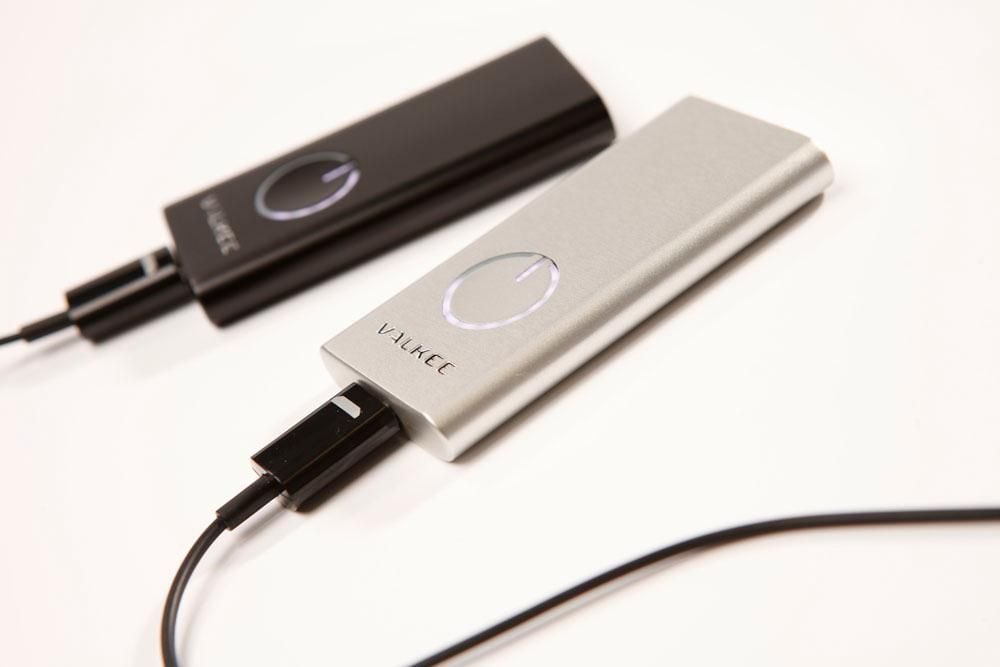Has a Finnish Company Found a Cure for Jet Lag?
Valkee is releasing the Human Charger, a new gadget that beams light through a user’s ears
/https://tf-cmsv2-smithsonianmag-media.s3.amazonaws.com/filer/9e/0d/9e0dfc32-9e1d-4a11-ab82-4f9d1737026a/humancharger_5.jpg)
Since the dawn of the Jet Age in the 1950s, travelers have bemoaned jet lag—the sleepiness, confusion, stomach problems and general sense of ickiness that comes from having your internal body clock out of sync with your surroundings.
There are the tried and true, physician-approved methods of dealing with the undesirable condition: gradually adjust your bedtime a bit before your trip, stay hydrated, sleep on the plane and avoid napping once you’ve arrived.
A new gadget called the Human Charger, however, offers to help cure jet lag in a novel way, by actually beaming light through your ears. Developed by Valkee, a Finnish company, the device looks like an iPod. Travelers begin treatment either during their flight or on the morning they land, depending on the time zones. While their seatmates assume they’re listening to music, they’ll actually be receiving UV-free white light through the Human Charger’s LED ear buds in 12-minute “doses.”
“We have the same light sensing proteins in our brains that we have in our eyes and our skin,” says Timo Ahopelto, the executive chairman of Valkee.
These proteins, called encephalopsins, are found in mammalian brains. It’s long been understood that the brain receives light signals via photoreceptors in the visual system. But encephalopsins themselves can act as “extraocular photoreceptors”—that is, they seemingly perceive light without input from the eyes.

The technology behind the Human Charger was originally developed to fight Seasonal Affective Disorder (SAD), a mood disorder whose most common manifestation is depression during the dark months of winter. It’s a major problem in places like Oulu, the city in northern Finland where Valkee is based, which can have as little as four daylight hours per day in mid-winter.
SAD is traditionally treated with light therapy, meaning patients sit in front of a light box that mimics sunlight. But light boxes are large and bulky, and impossible to use on the go. One of Valkee’s engineers, Antti Aunio, who’d previously worked at Finnish mobile phone giant Nokia, had the idea of using earbuds to transmit light directly to the brain. Since light can penetrate the human skull to some degree, especially around the ear canal, he figured earbuds would be an ideal light-delivery system.
Customers happy with the resulting anti-SAD device started using the technology “off label” when traveling, Ahopelto says, giving the company the idea to test its efficacy for treating jet lag. A placebo-controlled study, published last month in the journal Aerospace Medicine and Human Performance, found “a significant reduction of overall jet lag symptoms” in subjects treated with four daily 12-minute Human Charger light exposures following a transatlantic flight. Not all those who have tried Valkee’s £200 ($311) device have been impressed, though—a still jet lagged Guardian reviewer called it a “very expensive flashlight.” Valkee will release the human charger next Wednesday, to be available online and through a number of airline partnerships.
The Human Charger is far from the only technology that claims to head off jet lag.
The Re-Timer, developed by Australian researchers, looks like a pair of futuristic lens-less glasses. It beams UV-free green light into your eyes to help adjust your body to new time zones before you even step on a plane. And a team at Stanford is currently developing a light-pulsing eye mask designed to shift your circadian rhythm while you sleep.
There are also several apps that help travelers realign their circadian rhythms by telling them when to sleep and wake, when to avoid light and when to take supplements like melatonin.
Boeing’s new 787 Dreamliners are equipped with anti-jet lag technologies, including cabin lighting that gently changes to reflect the time zone, moist air (dehydration can worsen jet lag symptoms) and windows that dim electronically.
These gadgets and improvements aside, the best cure of all is time itself: it takes about one day per time zone crossed to fully adjust. So if you’ve flown from Chicago for a weeklong getaway in Paris, you should be perfectly in sync with l’heure locale by the time you head to the airport for the flight home.
/https://tf-cmsv2-smithsonianmag-media.s3.amazonaws.com/accounts/headshot/matchar.png)
/https://tf-cmsv2-smithsonianmag-media.s3.amazonaws.com/accounts/headshot/matchar.png)